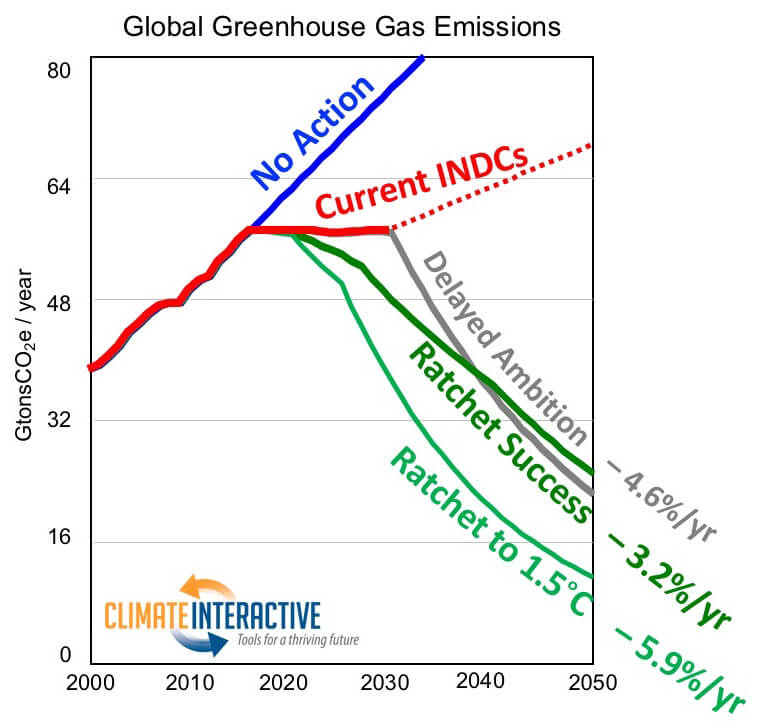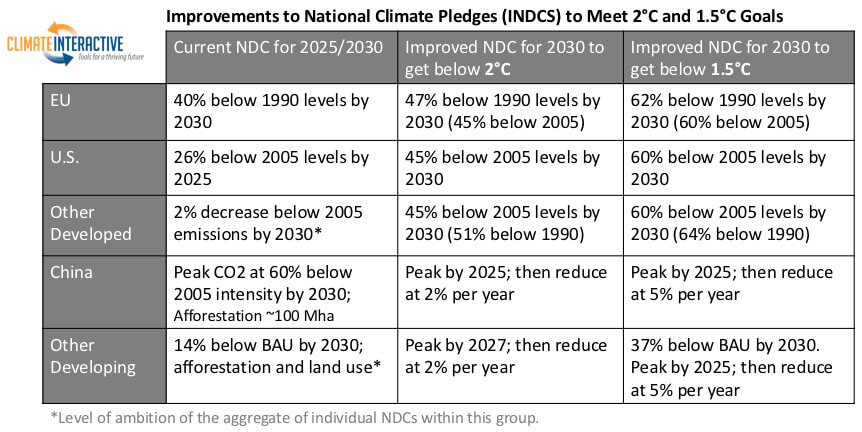Paris Agreement Pledges Must Be Strengthened in Next Few Years to Limit Warming to 1.5°C or Well Below 2°C
A quick note:
Climate Interactive was one of the first teams to add up all the
pledges countries were putting forward for the UN climate change negotiations initially around the Copenhagen climate talks in 2009 and
the analysis played a historic role in the ensuing ten years of negotiations. During that time the addition of assessments like the UNEP
Emissions Gap report, expanded efforts like the Climate Action Tracker, and many others, the need to offer another analysis of the gap
between where policies are headed and what is needed has felt well covered. As a result, Climate Interactive has decided to invest our
time in other endeavors. The Climate Scoreboard analysis below is no longer being updated and does not reflect the latest pledges countries have put forward. The C-ROADS simulation model that we used to create this analysis is still updated and available for your use. We encourage you to
continue using C-ROADS with groups to interactively create your own scenarios for what is needed to address climate change.
The Paris Agreement sets a goal to limit warming well below 2°C with an effort to limit warming to no more than 1.5°C. However, full implementation of the current pledges, as of April 20, 2016, would result in expected warming by 2100 of 3.5°C (6.3°F). Deeper, earlier emissions cuts are needed to limit warming well below 2°C. The Paris Agreement provides a mechanism for the nations of the world to increase their commitments and submit stronger pledges by 2020. Climate Interactive’s analysis here shows what this could mean.
Analysis from Climate Interactive:
Stronger Pledges Needed (May 18, 2016) – pdf
Press Release (April 20, 2016)


